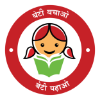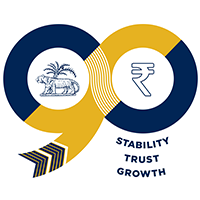Money and Credit - আরবিআই - Reserve Bank of India
 IST,
IST,


Money and Credit
| Central Board of Director appointed/nominated under RBI Act, 1934 | ||
|---|---|---|
| Section of RBI Act | Sr. No. | Name |
| 8 (1) (a) | 1. | Shri Shaktikanta Das Governor |
| 2. | Dr. M.D. Patra Deputy Governor |
|
| 3. | Shri M. Rajeshwar Rao Deputy Governor |
|
| 4. | Shri T. Rabi Sankar Deputy Governor |
|
| 5. | Shri Swaminathan J Deputy Governor |
|
| 8 (1) (b) | 6. | Ms. Revathy Iyer |
| 7. | Prof. Sachin Chaturvedi | |
| 8 (1) (c) | 8. | Shri Satish Kashinath Marathe |
| 9. | Shri Swaminathan Gurumurthy | |
| 10. | Shri Anand Gopal Mahindra | |
| 11. | Shri Venu Srinivasan | |
| 12. | Shri Pankaj Ramanbhai Patel | |
| 13. | Dr. Ravindra H. Dholakia | |
| 8 (1) (d) | 14. | Shri Ajay Seth |
| 15. | Dr. Vivek Joshi | |
| Address: C/o CGM-in-Charge and Secretary Secretary’s Department Reserve Bank of India 16th floor, Central Office Building Shahid Bhagat Singh Marg Mumbai – 400 001 |
||
| Holiday Name English | Holiday Name Hindi | Holiday Name Tamil | Holiday Name Assamese | Holiday Name Bengali | Holiday Name Gujarati | Holiday Name Kannada | Holiday Name Malayalam | Holiday Name Marathi | Holiday Name Oriya | Holiday Name Punjabi | Holiday Name Telugu | Holiday Name Urdu |
| Uttarayana Punyakala, Makara Sankranti Festival |
उत्तरायण पुण्यकाल, मकर संक्रांति महोत्सव |
உத்தராயானா புன்யாகாலா, மகரா சங்க்ராந்தி திருவிழா |
উত্তৰায়ণ পুণ্যকলা, মকৰ সংক্ৰান্তি উৎসৱ | উত্তরায়ণ পুণ্যকালা, মকরা সংক্রান্তি উৎসব |
ઉત્તરાયાણ પુણ્યકાલા, મકરા સંક્રાંતિ ઉત્સવ |
ಉತ್ತರಾಯಣ ಪುಣ್ಯಕಾಲ, ಮಕರ ಸಂಕ್ರಾಂತಿ ಉತ್ಸವ |
ഉത്തരായണ പുണ്യകാല, മകര സംക്രാന്തി ഫെസ്റ്റിവൽ |
उत्तरायाना पुण्यकाळा, मकरा संक्रांती उत्सव |
ଉତ୍ତରାୟଣ ପୁଣ୍ୟକାଳ, ମକର ସଂକ୍ରାନ୍ତି ମହୋତ୍ସବ |
ਉੱਤਰਾਯਾਣਾ ਪੁਨਯਾਕਾਲਾ, ਮਕਰਾ ਸੰਕਰਾਂਤੀ ਤਿਉਹਾਰ |
ఉత్తరాయణ పుణ్యకాల, మకర సంక్రాంతి ఉత్సవం |
اترایانا پونیکالا, مکارا سنکرانتی تہوار |
| Republic Day |
गणतंत्र दिवस |
குடியரசு தினம் |
প্ৰজাতন্ত্ৰ দিৱস | গণতন্ত্র দিবস |
ગણતંત્ર દિવસ |
ಗಣರಾಜ್ಯೋತ್ಸವ ದಿನ |
റിപ്പബ്ലിക്ക് ദിനം |
प्रजासत्ताक दिन |
ଗଣତନ୍ତ୍ର ଦିବସ |
ਗਣਤੰਤਰ ਦਿਵਸ |
రిపబ్లిక్ డే |
یوم جمہوریہ |
| Maha Shivaratri |
महाशिवरात्रि |
மகாஷிவ்ராத்திரி |
মহাশিৱৰাত্ৰি | মহাশিবরাত্রি |
મહાશિવરાત્રી |
ಮಹಾಶಿವರಾತ್ರ |
മഹാശിവരാത്രി |
महाशिवरात्री |
ମହାଶିବରାତ୍ରି |
ਮਹਾਸ਼ਿਵਰਾਤਰੀ |
మహాశివరాత్రి |
مہاشوراتری |
| Ugadi Festival |
गुढ़ी पड़वा / उगादि त्योहार / तेलगु नव वर्ष दिवस / सजिबू नोंगमापनबा (चीरोबा) / पहला नवरात्र |
குதி பட்வா/உகாடி திருவிழா/தெலுங்கு புத்தாண்டு நாள்/சஜிபு நாங்கமபன்பா (செய்ரோபா)/முதல் நவராத்திரா |
গুঢ়ি পড়ৱা/উগাড়ি উৎসৱ/তেলুগু নৱবৰ্ষ দিৱস/ছাজিবু নংমাপানবা (চেইৰাওবা)/প্ৰথম নৱৰাত্ৰি | গুধি পাডওয়া/উগাদি উৎসব/তেলুগু নিউ ইয়ার্স ডে/সাজিবু নঙ্গমাপানবা (চেইরাওবা)/প্রথম নবরাত্রি |
ગુધી પડવા/ઉગાડી ઉત્સવ/તેલુગુ નવા વર્ષનો દિવસ/સાજીબુ નોંગમપણબા (ચેઇરાઓબા)/પહેલો નવરાત્રા |
ಗುಧಿ ಪಡ್ವಾ/ಉಗಾಡಿ ಫೆಸ್ಟಿವಲ್/ತೆಲುಗು ನ್ಯೂ ಇಯರ್ಸ್ ಡೇ/ಸಾಜಿಬು ನಂಗಮಪನ್ಬಾ (ಚೆರಾವ್ಬಾ)/ಮೊದಲನೇ ನವರಾತ್ರ |
ഗുധി പഡ്വ/ഉഗാദി ഫെസ്റ്റിവൽ/തെലുഗു ന്യൂ ഇയേർസ് ഡേ/സാജിബു നോങ്മപാൻബ (ചെയ്രോബ)/ആദ്യ നവരാത്ര |
गुधी पडवा/उगाडी फेस्टिव्हल/तेलुगू न्यू इअर्स डे/साजिबू नोंगमपणबा (चेइरावबा)/पहिला नवरात्रा |
ଗୁଡ଼ି ପଡୱା/ଉଗଦି ଫେଷ୍ଟିଭାଲ/ତେଲୁଗୁ ନୂଆ ବର୍ଷର ଦିବସ/ସାଜିବୁ ନୋଙ୍ଗମାପନବା (ଚେଇରାଓବା)/ପ୍ରଥମ ନବରାତ୍ରି |
ਗੁਧੀ ਪੜਵਾ/ਉਗਦੀ ਤਿਉਹਾਰ/ਤੇਲੁਗੂ ਨਿਊ ਈਅਰ'ਸ ਡੇ/ਸਾਜੀਬੁ ਨੋਂਗਮਪੰਬਾ (ਚੇਰਾਓਬਾ)/ਪਹਿਲਾ ਨਵਰਾਤਰਾ |
గుధి పడ్వా/ఉగడి ఫెస్టివల్/తెలుగు న్యూ ఇయర్స్ డే/సాజిబు నోంగ్మపన్బా (చెయిరోబా)/ మొదటి నవరాత్ర |
گودھی پاڈو/یوگاڈی فیسٹیول/تیلگو نئے سال کا دن/ساجیبو نونگماپنبا (چیراوبا)/پہلا نوراترا |
| Khutub-E-Ramzan |
कुतुब-ए-रमज़ान |
குதுப்-இ-ரம்ஜான் |
খুতুব-ই-ৰমজান |
খুতুব-ই-রমজান |
ખુતુબ-ઇ-રમઝાન |
ಖುತುಬ್-ಇ-ರಂಜಾನ್ |
ഖുതുബ്-ഇ-റംസാൻ |
खुतुब-ए-रमजान |
ଖୁଟୁବ-ଇ-ରମଜାନ୍ |
ਖੁਤੂਬ-ਏ-ਰਮਜ਼ਾਨ |
ఖుతుబ్-ఇ-రంజాన్ |
خطوبِ رمضان |
|
AUTHORS Sadhan Kumar Chattopadhyay Director Siddhartha Nath Assistant Adviser Sreerupa Sengupta Manager Shruti Joshi Manager
This document describes the procedures, methodologies and approaches used in the construction of India KLEMS database version 2023. The dataset includes measures of Gross Value Added (GVA), Gross Value of Output (GVO), Labour Employment (L), Labour Quality (LQ), Capital Stock (K), Capital Composition (KQ), the consumptions of Energy (E), Material (M) and Services (S) inputs, Labour Productivity (LP) and Total Factor Productivity (TFP). The database covers 27 industries comprising of the entire Indian economy. The database also provides these estimates at the broad sectoral levels (agriculture, manufacturing and services) and at the all-India levels. In the current version of the database covers the period from 1980-81 to 2021-22. The series have been constructed on the basis of data compiled from NSO, NSSO, ASI, Input-Output tables (I-O tables) and processed according to appropriate procedures. These procedures were developed to ensure harmonization of the basic data, and to generate growth accounts in a consistent and uniform way. Harmonization of the basic data has focused on several areas such as industrial classification, and aggregation levels. The production and publication of India KLEMS database are meant to support empirical research in the area of economic growth and its sources. Most importantly, the database is meant to support the conduct of policies aimed at supporting the acceleration of productivity growth in the Indian economy. The India KLEMS database, in this regard, provides a comprehensive measurement tool to monitor and evaluate productivity growth in the Indian economy. Finally, the construction of the database would also support the systematic production of reliable statistics on growth and productivity using internationally comparable methodologies based on India’s national accounts, input-output tables and labour market surveys. The work relating to compilation of India KLEMS data was being done by the India KLEMS team housed at the Centre for Development Economics, Delhi School of Economics until the end of 2020. The work has been shifted to the KLEMS Division of the Department of Economics and Policy Research of RBI since February 2021. The KLEMS Division at RBI compiled the India KLEMS data under the supervision of the India KLEMS team until 2022. The current version of the India KLEMS Database, released hereby, is the second independent compilation of this data by the KLEMS Division in RBI, after the previous release of the data in 2023. 1.2 Coverage: Industries and Variables In this section we describe the coverage of India KLEMS database in terms of industries and variables. The database is created for 27 industries. The industrial classification is constructed by building concordance between NIC 2008, NIC 2004, NIC 1998, NIC 1987 and NIC 1970 to generate a uniform definition of ‘industries’ since 1980-81. This classification is very close to the International Standard Industrial Classification (ISIC) revision 3. The 27 industries are aggregated to form six broad sectors, namely:
Table 1.1 provides a list of the 27 industries, including the higher aggregates. For detailed classification and concordance of study industries with NICs, readers may refer to Version 8 of the manual published in 2022. Table 1.2 provides an overview of all the series included in our database. Measures of Capital (K), Labour (L), Energy (E), Material (M) and Service (S) inputs as well as Gross Output (GO), have been constructed using National Accounts Statistics (NAS), Annual Survey of Industries (ASI), NSSO rounds and Input-Output (IO) Tables. In building annual time series on gross output, five inputs and factor income shares, various assumptions are made to fill up gaps in industry details and link series over time. As we know that NSSO rounds of unregistered manufacturing, Input Output Transaction Tables, and Employment and Unemployment Surveys by NSSO are available only for certain benchmark years, the use of information from these data sources necessitates interpolation and assumption of constant shares for building a series of output and inputs. However, as the successor of NSSO's Employment Unemployment Survey, the Periodic Labour Force Survey (PLFS) data has become available annually since 2017-18, the labour input series no longer requires any extrapolation. The labour input series is being updated under each round of India KLEMS using available survey data from PLFS only.
Basis data sources used for the computation of labour income share are NAS, ASI and unit level data of survey of unorganized manufacturing enterprises. These data sources are used to obtain estimates of CE, OS and MI for each of the 27 study industries. For splitting the labour and non-labour components out of the mixed income of self-employed, the unit level data of NSS employment-unemployment survey are used along with the estimates of CE, OS and MI basically obtained from the NAS. |
|||||||||||||||||||||||||||||||||||||||||||||||||||||||||||||||||||||||||||||||||||||||||||||||||
পেজের শেষ আপডেট করা তারিখ: null


















